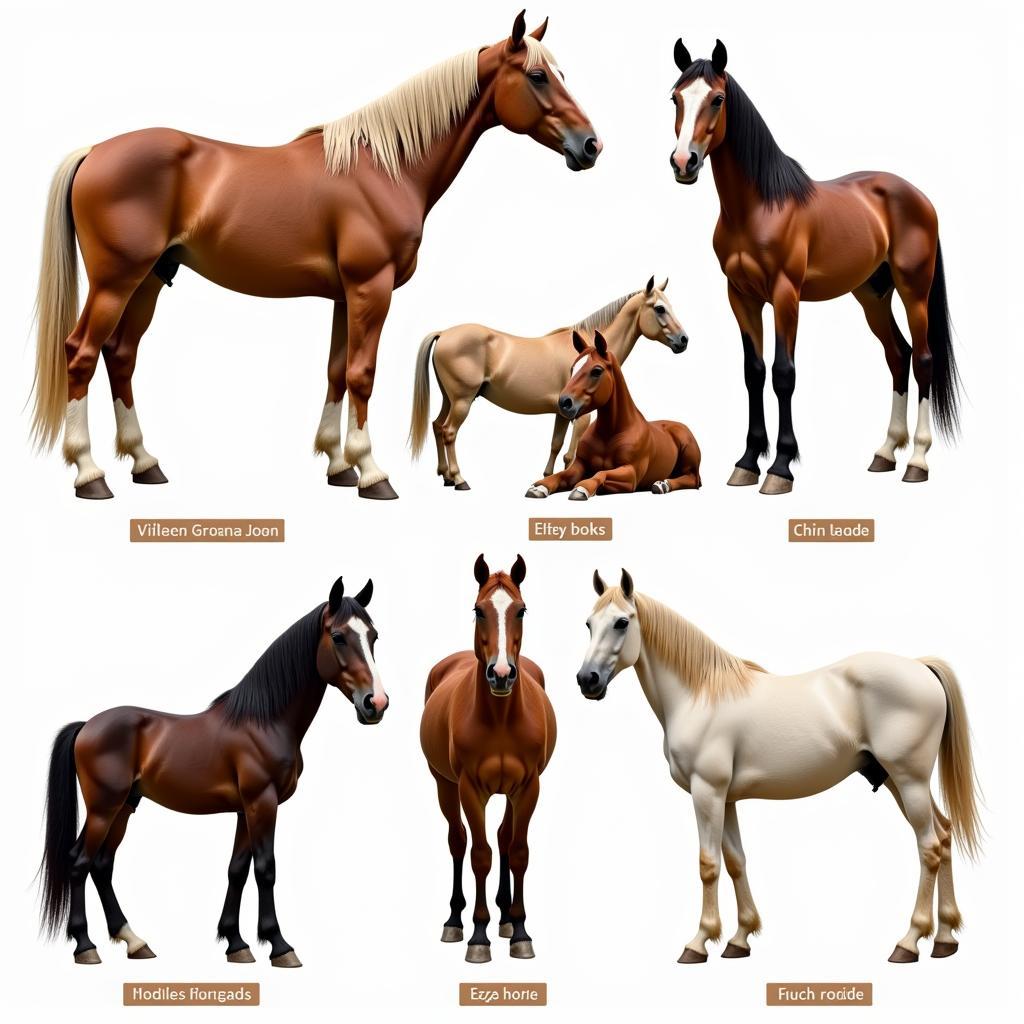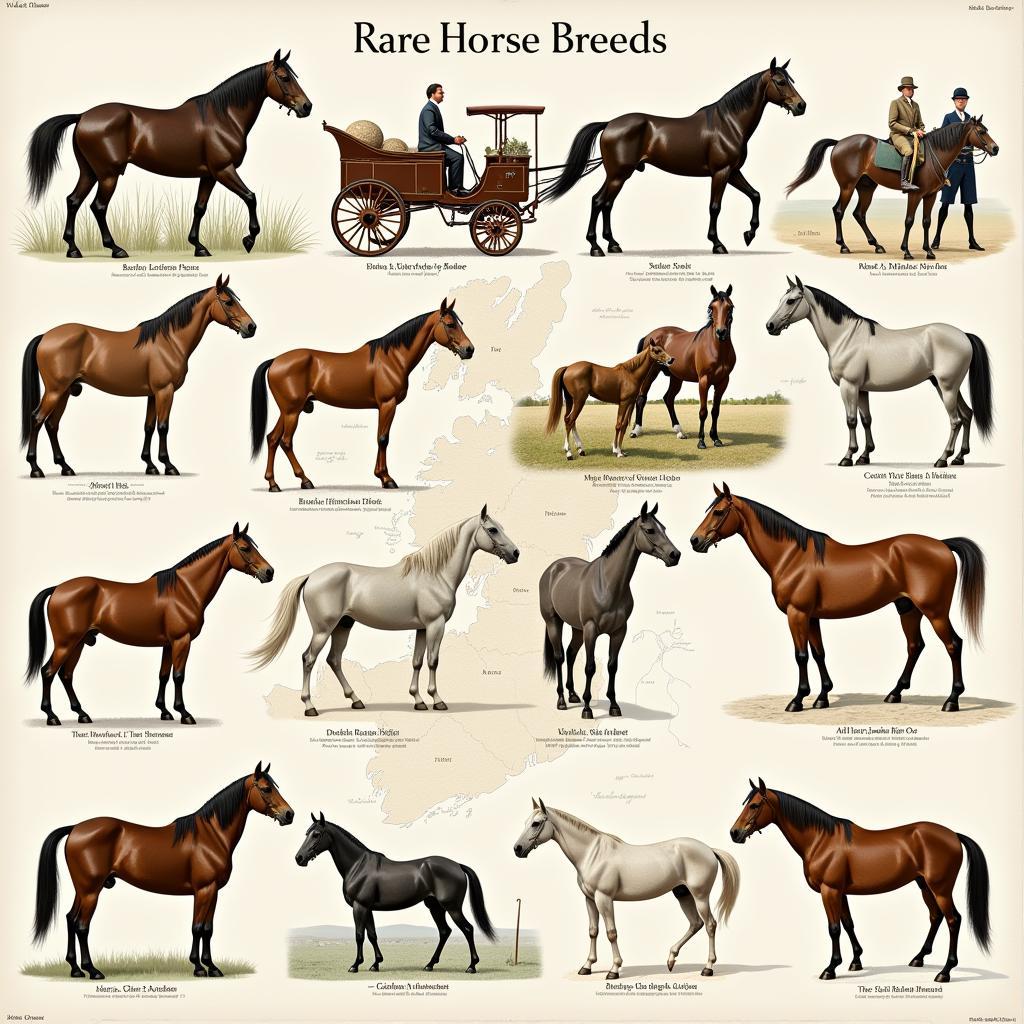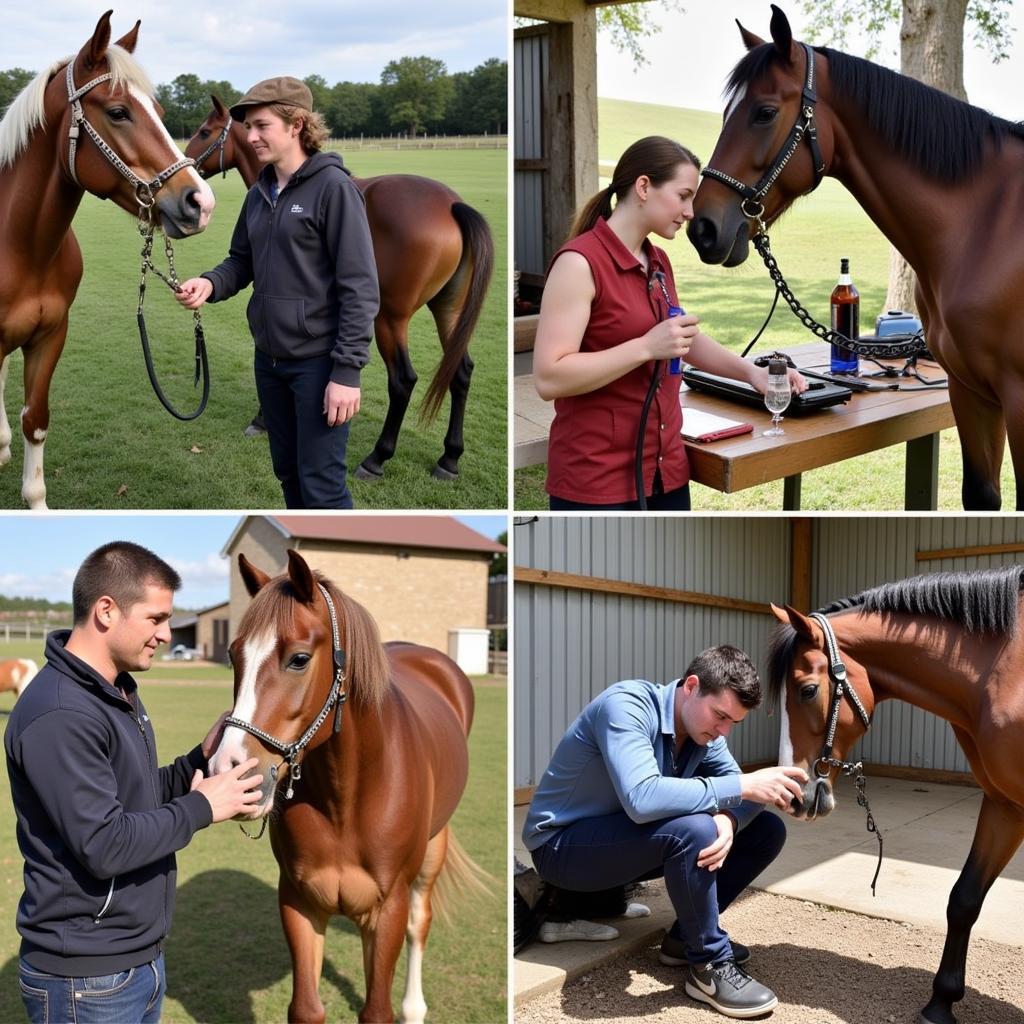Rare Breeds Of Horses offer a captivating glimpse into equine history and genetic diversity. These unique animals, often possessing distinct characteristics and fascinating origins, are a testament to the enduring bond between humans and horses. This article delves into the world of rare horse breeds, exploring their history, characteristics, and the importance of their preservation.
The allure of rare breeds of horses lies not only in their beauty but also in their unique stories. Many of these breeds have played vital roles in shaping human history, from carrying knights into battle to working the fields alongside farmers. Some breeds have adapted to harsh environments, developing remarkable resilience and specialized traits. Learning about these rare breeds provides a deeper understanding of the intricate relationship between humans and horses throughout history. What defines a rare breed, however, can be subjective and often depends on various factors such as population size, geographic distribution, and the presence of a dedicated breed registry.
Unveiling the Unique Characteristics of Rare Breeds of Horses
Rare horse breeds frequently exhibit distinctive physical attributes that set them apart. These can include unusual coat colors, unique markings, and specific body conformations. For instance, the Narragansett Horse is known for its gaited ability and distinctive coloring. These characteristics are often a product of their unique genetic makeup and the environments in which they have evolved. Understanding these distinctive traits is essential for appreciating the diversity within the equine world.
Some rare breeds are renowned for their exceptional temperaments and specific abilities. These traits can make them ideal for particular disciplines or uses, from driving and dressage to trail riding and therapeutic programs. Whether it’s their gentle nature, exceptional athleticism, or unique gait, these special qualities contribute to the value and preservation of these remarkable animals.
 Rare Horse Breeds Exhibiting Unique Physical Characteristics
Rare Horse Breeds Exhibiting Unique Physical Characteristics
Delving into the History and Origins of Rare Breeds of Horses
Many rare breeds possess fascinating histories intertwined with human civilization. Some breeds developed in isolated regions, adapting to specific environmental conditions and developing unique traits. Others played significant roles in historical events, serving as war horses, working animals, or cherished companions. Exploring the origins and historical significance of these rare breeds offers a rich tapestry of equine history. Learning about the tuxedo horse breed can be a fascinating journey into the world of equine coat patterns.
“Preserving these rare breeds is not just about protecting a handful of horses,” says Dr. Emily Carter, Equine Geneticist. “It’s about safeguarding a living library of equine genetics, each breed holding a unique piece of the puzzle that tells the story of horse evolution and human history.”
 Historical Significance of Rare Horse Breeds
Historical Significance of Rare Horse Breeds
Why Preserving Rare Breeds Matters
The conservation of rare breeds of horses is crucial for maintaining genetic diversity within the equine population. This diversity provides a reservoir of valuable genetic material that can contribute to the overall health and resilience of horses. As the world changes, this genetic diversity becomes increasingly important in ensuring the adaptability of horses to future challenges. Perhaps you are looking for information on vintage Breyer horses value, which can also offer insights into the history and appreciation of different horse breeds.
“Each rare breed represents a unique genetic lineage, adapted to specific environments and carrying traits that could be crucial for the future of horses,” explains Dr. James Thompson, Equine Veterinarian. “Losing these breeds would be like losing a valuable piece of our equine heritage.”
The Challenges and Rewards of Owning Rare Horses
Owning a rare breed of horse can be a rewarding experience, but it also presents unique challenges. These challenges can include finding qualified veterinarians and farriers familiar with the breed’s specific needs, as well as accessing appropriate breeding stock. It’s also essential to be aware of the importance of Actiflex for horses to ensure their joint health and well-being. Additionally, the cost of acquiring and caring for a rare breed can be higher than more common breeds. However, for many owners, the unique characteristics, historical significance, and the satisfaction of contributing to the preservation of a rare breed far outweigh the challenges. You might also be interested in the Breyer Spirit of the Horse collection, which celebrates the beauty and spirit of these magnificent animals.
 Owning and Caring for Rare Breeds of Horses
Owning and Caring for Rare Breeds of Horses
Conclusion
Rare breeds of horses represent a vital part of our equine heritage. Their unique characteristics, historical significance, and genetic diversity make them worthy of preservation. By understanding and appreciating these rare breeds, we can help ensure their survival for generations to come. Learning about these rare breeds of horses is a journey into a world of fascinating history, unique beauty, and dedicated preservation efforts.
FAQ
- What makes a horse breed rare?
- What are some of the most endangered horse breeds?
- How can I contribute to the preservation of rare horse breeds?
- What are the challenges of owning a rare breed of horse?
- Where can I find more information about rare horse breeds?
- Are there any specific health concerns related to rare horse breeds?
- What are some examples of rare horse breeds used in specific disciplines?
Need help? Contact us 24/7. Phone: 0772127271, Email: [email protected]. Address: QGM2+WX2, Vị Trung, Vị Thuỷ, Hậu Giang, Việt Nam.